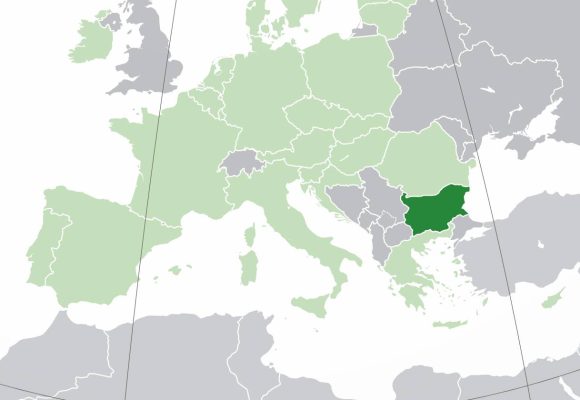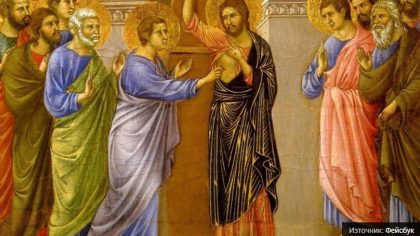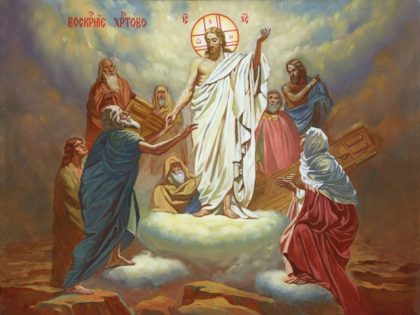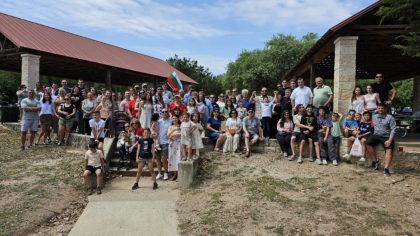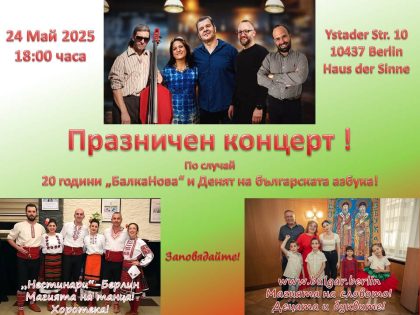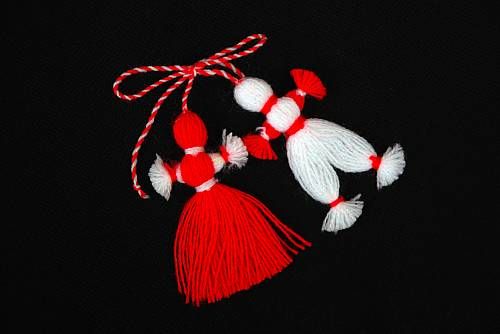
.
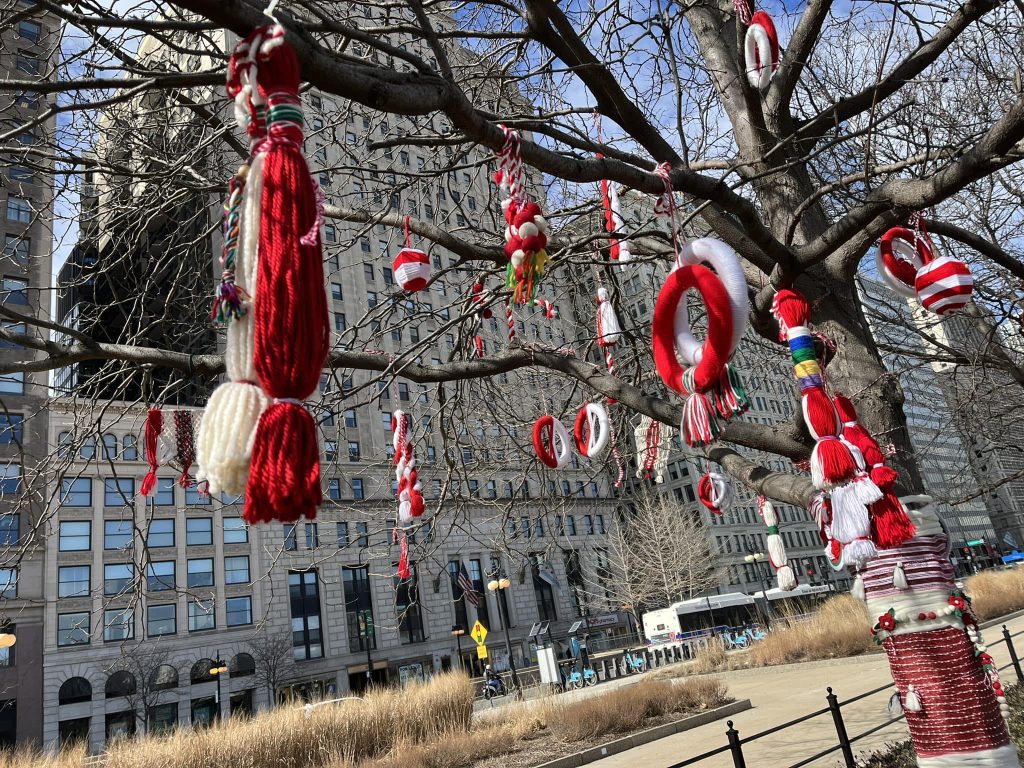
.
MARTENITSA TREE
On the 1st of March Bulgarians celebrate a beautiful tradition called Baba Marta ( Grandma March ) to welcome the approaching spring. On that day Bulgarians exchange Martenitsas [ˈmartɛnit͡sa] wishing good health and happiness to family and friends. The Martenitsa is made of twined red and white threads where the white symbolizes strength, purity and happiness, and the red is associated with health and fertility. It is traditionally worn until one sees a stork or a blooming tree. In 1992 the artist Marian Milanov started decorating trees in red and white, a new tradition that spread to Bulgarian communities all over the world.
By decorating this tree the Bulgarian immigrants of Chicago and its vicinity send their best wishes for happiness and prosperity to this city and the people who have opened their hearts to welcome them in their communities.
Trees adorned with the Bulgarian traditional martenitsa around the world are promoting the unique tradition of celebrating 1-st of March and making it the most recognized symbol of the Bulgarian culture by giving a symbolic martenitza/martisor to the cities where we live. By decorating trees, buildings or other objects in the city public place we are sending out our best wishes for happiness and prosperity to the rest of the world.
The initiative, which was launched in 2011, comes from a group of Bulgarian emigrants across the globe and their Project Martenitsa aiming at promoting Bulgarian traditions and culture and creating a positive image of Bulgaria.
The idea to decorate trees with martenitsas belongs to Bulgarian artist, Maryan Milanov, who in 1992 decorated the first three in the southern Bulgarian city of Stara Zagora.
The Project Martenitsa abroad was launched in the Australian Queensland capital, Brisbane, after the Lord Mayor of Brisbane, Campbell Newman, personally approved the initiative and the sponsorship of the Project by the Brisbane City Council.
The Bulgarian-American Association (BAA) was the first established among the Bulgarian public organizations with social goals operating today in Chicago. It was founded more than 22 years ago to support and develop the legal, economic, cultural, etc. interests of the Bulgarian community in our city.
The red and white woven threads symbolize the wish for good health. They are the heralds of the coming of spring and of new life. While white as a color symbolizes purity, red is a symbol of life and passion, and so some ethnologists have proposed that, in its very origins, the custom might have reminded people of the constant cycle of life and death, the balance of good and evil, and the sorrow and happiness in human life. The Martenitsa is also a stylized symbol of Mother Nature, the white symbolizing the purity of the melting white snow and the red setting of the sun, which becomes more and more intense as spring progresses.
People receive Martenitsa as presents from relatives, friends and colleagues. Even you can see dogs and cats wearing them. Martenitsi are always given as gifts. Tradition dictates that people never buy Martenitsi for themselves. Best is when you make for others, and especially when kids make some for their family and friends.
.
Martenitsa traditionis are on the UNESCO Representative List of the Intangible Cultural Heritage of Humanity
The custom of wearing Martenitsa is probably one of the most interesting Bulgarian (pagan) tradition and it is considered to be unique to Bulgaria. According to one of the many legends, this tradition is also related to the founding of the Bulgarian state in 681 AD.
This is an old tradition that remains almost unchanged today and the common belief is that by wearing the red and white colors of the martenitsa people ask Baba Marta for mercy. The tradition is related to the ancient pagan history of the Balkan Peninsula (s. 1808) and to all agricultural cults of nature.
The authentic story relates the 1st Martenitsi to the 7th-century Battle of Ongal (680) between the Bulgarian Khan Asparuh and the Byzantines, which resulted in a decisive Bulgarian victory. After the battle, the Bulgarian Khan sent eagles with white threads to announce the victory to his main camp. The threads turned bloody during the flight, thus creating the first Martenitsa. A peace treaty with the Byzantine Empire was signed in 681, marking the foundation of the First Bulgarian Empire on the territory both N and S of the lower course of the Danube River in 681 as an alliance between the ruling Bulgars and the numerous slavs in the area, becoming the oldest still existing Europian state.
On that day, Bulgarians exchange, so called „Martenitsi“ („Martenitsa“ – singular, „Martenitsi“ – plural) and tell each other, „Chestita Baba Marta!“ (Happy Grandma Marta!). This custom is essentially to wish great health, good luck, and happiness to family and friends. The name „Martenitsa“ is taken from the Bulgarian word for March, or, as a legend tells, an angry old lady called Grandma Marta – Baba Marta in Bulgarian („baba“ means grandmother and Marta comes from word „mart“, which means March in Bulgarian).
In Bulgarian folklore Baba Marta is a grumpy old woman who changes her mood very rapidly and it reflects in the changeable March weather. When she is smiling the weather is sunny and warm, but if she gets angry the cold will stay for longer and it may even snow. By wearing the red and white colors of the Martenitsa our predecessors asked Baba Marta for mercy. They hoped that it will make winter pass faster and bring spring.
The most typical Martenitsa represents two small wool dolls – Pizho and Penda. Pizho is the male doll, usually dominating in white color. Penda is the female doll, usually dominating in red color and distinguished by her skirt. There are many other variations and forms. Out of twined red and white threads are also made bracelets, necklaces, tassels, pompons, balls, squares, human or animal figures. Over the past several decades the tradition has been innovated by attaching all kinds of representations and symbols made of wood, leather, ceramics, metal foil to the thread-made martenitsas.
When someone gives you a Martenitsa you should wear it either pinned on your clothes, on the hand tied around the wrist, or around your neck until you see a stork, or a fruit tree in blossom for the first time in the season. After that you can tie it on a blossoming tree for fertility. It is believed that the Martenitsa bring health, happiness and longevity. Like kind of amulet, Martenitsa was attributed a magic power believed to protect folks from „ill fortune“, diseases and an evil eye.
Bulgaria
Bulgaria (България) officially the Republic of Bulgaria, is a country in Southeast Europe. Located west of the Black Sea and south of the Danube river, Bulgaria is bordered by Greece and Turkey to the south, Serbia and North Macedonia to the west, and Romania to the north. It covers a territory of 110,994 square kilometres (42,855 sq mi) and is the 16th largest country in Europe. Sofia is the nation’s capital and largest city; other major cities include Burgas, Plovdiv, and Varna.
Location and Geography.
The population increased gradually for most of the twentieth century, but has decreased by more than 1,500,000 people since 1989. This decline stems from out-migration and falling birthrates during the uncertain postsocialist period. About 70 percent of Bulgaria’s population lives in urban areas, compared to 25 percent in 1946. In 1992, 86 percent of the population self-identified as ethnically Bulgarian, 9 percent as Turkish, and 4 percent as Roma (Gypsy). Smaller groups include Russians, Armenians, Vlachs, Karakachans, Greeks, Tatars, and Jews.
Etiquette
In Bulgaria, gestures for indicating „yes“ and „no“ are essentially opposite from those common in most of the rest of Europe. A sideways shaking of the head indicates „Yes,“ and a short upward and downward movement (nod) of the head indicates „No.“
Bulgarians generally pride themselves on their hospitality and neighborliness. An uninvited visitor will first be greeted with a handshake or verbal greeting at the outermost doorway or gateway, and will be invited further into the private domestic space depending on the nature of the visit. At mealtimes, a guest will be offered food and drink, and at other times a drink (often homemade rakiya); it is impolite not to accept this hospitality. The obligation to accept a host’s offer extends to situations outside of the home, such as when invited for a meal or a drink in a restaurant or other establishment. When visiting someone’s home, it is customary to bring flowers or sweets.
On the street or in other public places, strangers will usually avoid making eye contact. In public transportation, it is expected that younger people will give up a seat to an older woman or to a parent with a young child. Failure to do so invites public censure from other passengers.
In ethnically-mixed areas, it is considered polite to greet a neighbor or acquaintance in that person’s own language.
Religious Beliefs.
Most ethnic Bulgarians belong to the Bulgarian Orthodox Church, though there are small numbers of Muslims (Pomaks), Protestants, and Roman Catholics. Most Turks and many Gypsies are Muslim, while some (especially Gypsies) are Christian. In Bulgaria, both Orthodox Christianity and Islam incorporate some pagan beliefs and rituals. Other religions include Judaism, Armenian Orthodox Christianity, and a variety of Protestant churches. Orthodox Christianity is enshrined in the constitution as the traditional religion in Bulgaria.
Secular Celebrations
Efforts were made during the socialist era to replace religious holidays and life-cycle rituals with secular ones—for example, civil ceremonies replaced church weddings and Grandfather Frost delivered presents on 1 January instead of Grandfather Christmas on 25 December. With communism’s fall, government-recognized holidays include Easter and Christmas, and some socialist holidays such as 9 September, marking the beginning of the socialist era, have disappeared.
New Year’s is celebrated on 1 January with holiday foods and traditions designed to bring luck and health in the coming year. Baba Marta (Grandmother March), on 1 March, is a pre-Christian holiday welcoming spring, on which people exchange martinitsas , good luck charms made from red and white threads. Bulgaria’s liberation from the Ottoman Empire is celebrated on 3 March, International Women’s Day on 8 March, Labor Day on 1 May, and Bulgarian education and culture on 24 May, a day associated with Saints Cyril and Methodius, founders of the Cyrillic alphabet. Other celebrations—often associated with the agricultural calendar, the Orthodox Christian calendar, or both— include the day of the vintner on 14 February; Saint George’s Day on 6 May, in honor of the patron saint of shepherds and the army; and festivals of masked kukeri (mummers) marking the beginning of spring and the agricultural season (dates vary). Important life-cycle celebrations mark births, high school graduations, send-offs to military service, weddings, and deaths. The latter are commemorated at specified intervals following death (e.g., nine days, forty days, six months, one year).
.
.

